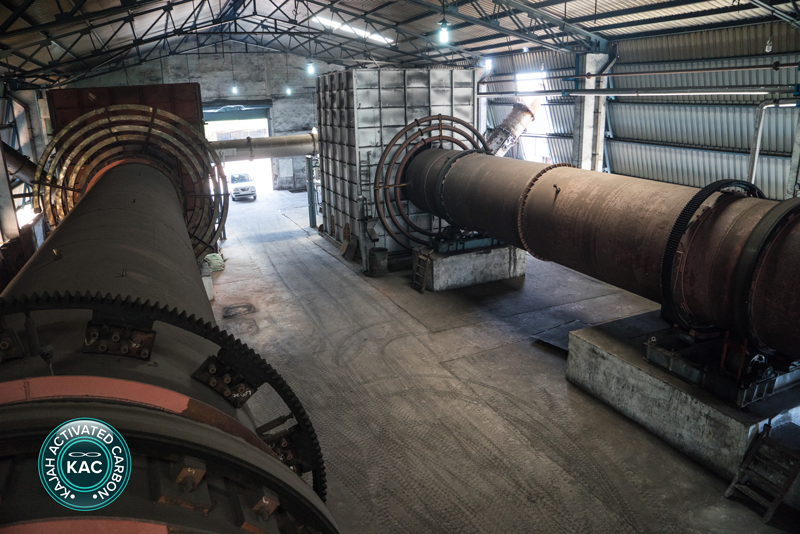Activated charcoal or Activated carbon is produced from carbonaceous material like coconut, coal, wood etc. The carbon-based material is then activated by treating it in a furnace at a high temperature. The resulting product will have a high rate of adsorption due to its large surface area per unit volume, resulting from a large network of submicroscopic pores.
Process
Charcoal is converted to activated charcoal by treating it in a rotary kiln in a process known as Steam Activation. The kiln usually has a length of up to 60 ft and attains a temperature of 800 – 1100°C.
After initial screening, the charcoal is inserted into the rotary kiln where it passes through several chambers. This activation process causes the charcoal to become more porous, increasing its surface area drastically. The output is activated charcoal which has strong adsorption properties due to its large surface area.

The material is then destoned and dedusted to remove stones and excess dust.
Following this, the material is inserted into the Gyro screener for particle separation. Here it is sorted into different grades based on mesh sizes.
Finally, the materials are processed in the packing area, and packed according to the customer’s specifications.
Activated Charcoal Grades
The common activated charcoal grades are as follows:
- 4X8
- 4X10
- 8X16
- 8X30
- 12X30
- 12X40
- 30X60
These numbers represent standard US mesh sizes. For instance, “4X8” implies that the granular size of the material is smaller than 4 mesh, and larger than 8 mesh.
Other Important Properties
Apart from particle size, these are the main properties considered when grading activated charcoal.
- Iodine number: The iodine number is a measure of the iodine adsorption capacity of the activated carbon. It is determined by the mass of iodine adsorbed by 1 gram of carbon.
- Methylene blue value: The methylene blue value is a measure of the activated carbon’s ability to adsorb a specific dye, methylene blue. It is determined by the mass of methylene blue adsorbed by 100 gram of carbon.
- Molasses number: The molasses number is a measure of the activated carbon’s ability to remove molasses. It is determined by the amount of molasses adsorped from a solution per 100 gram of carbon.
- Particle size: The particle size of activated carbon can be graded based on the size of the particles. This can be determined using a sieve analysis.
- Pore size distribution: The pore size distribution of activated carbon can be determined using a variety of techniques. This helps to identify the size and distribution of the pores within the carbon.